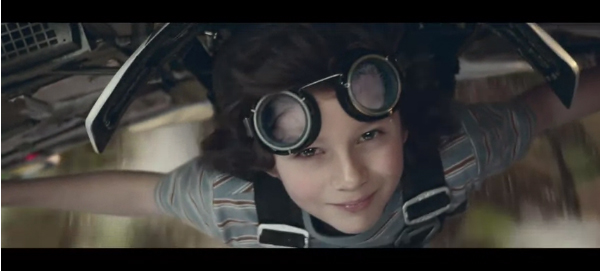If you didn't catch Nationwide's commercial, "Boy," during the Super Bowl warning parents about the at-home risks facing their children, then chances are you heard about it in the days following its release: be it the Washington Post("Congrats to the Nationwide commercial for being the Debbie Downer of the Super Bowl"), the Chicago Tribune("Nationwide killed a boy in Super Bowl ad only because it loves kids"), or one of the countless others that wrote, tweeted, created memes or pontificated about it aloud, scotch glass in hand, as if he were Don Draper.
According to Amobee Brand Intelligence, Nationwide was mentioned 238,000 times on social media and 64 percent of those mentions were negative.
For executives, it'd be awfully tempting to look at the immediate coverage and swear off taking any risks of this magnitude with your company's content. Sure, they might say, Nationwide started a conversation, but will they sell any insurance? Will public opinion over-shadow any attempt to grow the brand?

Today, more than ever, the media landscape blurs our conception of true success. We see it all the time with our clients, who, due to the fast-paced and saturated nature of the news cycle often expect immediate returns on their content.
So yes, the Nationwide ad could deter many from taking risks; yet if we take a closer look at the trajectory of this moment, a different picture emerges.
Here's how it played out:
The ad runs. We sigh, groan, maybe feel uncomfortable. But most of all there's anger: why did Nationwide pull me out of my cocoon of Super Bowl viewing and make me depressed?
We vent that anger through real-time responses on social media. The media then write articles that aggregate the Twitter consensus with a biting headline. Suddenly, our reflexive anger (which probably lasted all of 30 seconds in reality) has extended its half-life and set the agenda for top-tier news publications for at least one or two news cycles.
But soon, even the story of our anger levels off—longer, more nuanced articles begin to appear, replete with Nationwide's statement. A great example of this trajectory is USA Today's coverage: here and here. Now the media is talking about Nationwide, not Allstate or State Farm. They've entered the discussion in a poignant way.
Today's media landscape makes it easy to mistake a temporary flare-up with long-term failure. With social media, what used to be internalized, personal responses are now externalized and drawn out by our fast-paced news cycle. In this case, that response was anger—which is arguably the strongest and most misleading response of all (the Budweiser ad, so cute and humorous and much talked about, still didn't incite as visceral a response).
As a traditional ad, "Boy" may have failed. But as a piece of corporate branding, it may very well succeed. Now that the dust is settling, what is likely to linger in parents' minds is not the anger over the ad itself, but the awareness of a frightening issue and a website to visit to engage with that issue.
Will we be advocating for our clients to take a risk of this nature? Maybe not, but a company's risk is relative. What may seem like a small risk to some companies is a larger risk for others. And sometimes taking even a small risk can equate to a success in the long-term. But that risk must lead back to a well-defined goal for that piece of content. And we think Nationwide met its goal with this controversial ad.
So while today's media landscape may tempt companies into playing it safe for fear of immediate fallout, if your intentions are in line with your overall objectives, there's still some power in playing the long game.
Joe Eichner is a staffer at Greentarget, a strategic PR firm focused exclusively on business-to-business organizations.


 There’s a fine line between newsjacking and taking advantage, aka ambulance chasing. Our job as PR professionals is to tread it carefully.
There’s a fine line between newsjacking and taking advantage, aka ambulance chasing. Our job as PR professionals is to tread it carefully. PR firms need to be mindful of ways their work product may be protected by the attorney-client privilege whenever working with a client’s internal legal team or its external legal counsel.
PR firms need to be mindful of ways their work product may be protected by the attorney-client privilege whenever working with a client’s internal legal team or its external legal counsel. Manuel Rocha, former US ambassador and intenational business advisor to LLYC, plans to plead guilty to charges that he was a secret agent for Cuba.
Manuel Rocha, former US ambassador and intenational business advisor to LLYC, plans to plead guilty to charges that he was a secret agent for Cuba. CEO mentoring is an often-overlooked aspect of why CEOs are able to make good decisions, and sometimes make bad ones—all of which intersects with the role and duties of a board.
CEO mentoring is an often-overlooked aspect of why CEOs are able to make good decisions, and sometimes make bad ones—all of which intersects with the role and duties of a board.  How organizations can anticipate, prepare and respond to crises in an increasingly complex world where a convergent landscape of global challenges, threats and risks seem to arrive at an unrelenting pace.
How organizations can anticipate, prepare and respond to crises in an increasingly complex world where a convergent landscape of global challenges, threats and risks seem to arrive at an unrelenting pace.


 Have a comment? Send it to
Have a comment? Send it to 
No comments have been submitted for this story yet.